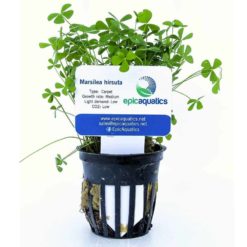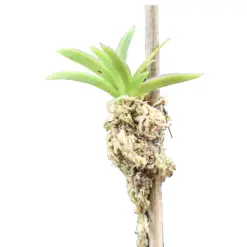Venus flytrap – Dionaea muscipula
*Please note that this plant is extremely small and fragile. ONLY USE RO WATER, DO NOT FERTILIZE AND GIVE IT ENOUGH LIGHT.
How to grow carnivorous plants
Most carnivorous plants grow in boggy soils with acidic, or ‘ericaceous’ compost. Most ericaceous compost contains peat, but there are several peat-free ericaceous mixes that have come onto the market in recent years. Keep this well watered and ensure it never dries out. Choose a bright, sunny spot to grow your carnivorous plants in summer and move to a coo, frost-free place in winter. Remove faded flowers and leaves as you need to.
1. Grow carnivorous plants in sun

Hardy carnivorous plants thrive in warm conditions with plenty of bright light in spring and summer, so grow them on a sunny windowsill, in a conservatory or on a sunny patio.
2. Keep carnivorous plants cool in winter

Most carnivorous plants are temperate as opposed to tropical plants, so need a cool spot in winter in order to rest – otherwise they will become exhausted and die. As they go dormant, some plants may die back (and the traps on a Venus fly trap may turn black and die). Place in a cool, unheated room or cool greenhouse – around 7°C is ideal – and keep the compost just moist.
3. Grow carnivorous plants in moist compost

In the wild, hardy carnivorous plants grow in boggy ground, so their compost needs to be moist at all times during the warmer months. Sit the pot in a saucer of water and keep it topped up. Alternatively, block drainage holes so that water cannot drain away. Keep the compost just moist during the winter rest period.
4. Water carnivorous plants with rain water

5. Grow carnivorous plants in ericaceous compost

Carnivorous plants grow best in a low-nutrient medium, such as peat or a specialist compost, known as ericaceous compost. If you would rather not use peat for environmental reasons, you could try Moorland Gold, which is derived without damage to peat bogs, or a peat-free ericaceous potting mix.
6. Don’t overfeed carnivorous plants with insects

Don’t feel you have to ‘feed’ your carnivorous plant with insects – if it’s outside it will catch its own and even indoors there should be insects they can feed on.
7. Don’t fertilise carnivorous plants

There’s no need to use fertiliser on your carnivorous plants – they get all the nutrients they need from the insects that they catch. In fact, fertiliser can kill the plants, which typically grow in nutrient-poor soils.
8. Don’t tease carnivorous plants

If the traps on your Venus flytrap are no longer closing, it may be because curious fingers have poked at your plant too often. Each trap only closes around five times in its lifetime, so resist provoking your plant.
Only logged in customers who have purchased this product may leave a review.












Reviews
Clear filtersThere are no reviews yet.